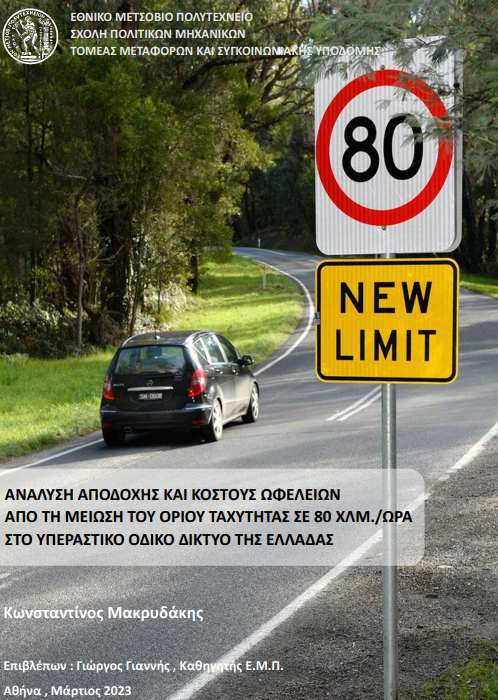
The aim of this thesis is to investigate the acceptance of the reduction of the speed limit from 90 km/h to 80 km/h in the interurban road network of Greece and to investigate the socio-economic feasibility of the proposed intervention through Cost Benefit Analysis. For this reason, a special questionnaire was developed and answered by 408 travellers, from different parts of Greece, based on the stated preference method for 10 hypothetical scenarios with variations of the variables travel time, fuel consumption and probability of road accident with serious injury. Two multinomial logistic regression models and one binomial logistic regression model were developed. The models were combined to determine which variables influence the user’s choice: increase in travel time, reduction in fuel consumption, reduction in the likelihood of road accidents with injury, driving experience, main transport mode to and from work, the role of speeding in causing accidents, the role of pedestrians in the choice of driving speed and finally some specific demographic characteristics. Subsequently, a Cost-Benefit Analysis (CBA) was conducted to
investigate the economic feasibility of the measure, with a time horizon up to 2030. The analysis calculated the investment costs and the impacts on traffic, road safety and the environment expressed in monetary units and showed that the reduction of the speed limit to 80 km/h on the interurban road network in Greece is considered to be economically very positive for society, with a positive economic Net Present Value (ENPV=€170.7 million) and a high ERR (ERR=39.1%).
investigate the economic feasibility of the measure, with a time horizon up to 2030. The analysis calculated the investment costs and the impacts on traffic, road safety and the environment expressed in monetary units and showed that the reduction of the speed limit to 80 km/h on the interurban road network in Greece is considered to be economically very positive for society, with a positive economic Net Present Value (ENPV=€170.7 million) and a high ERR (ERR=39.1%).
| ID | ad136 |
| Presentation | |
| Full Text | |
| Tags |







